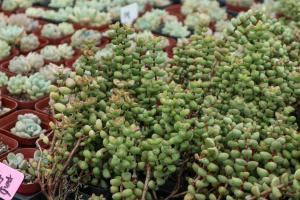How to Care for Hibiscus Plants in Pots
Hibiscus plants are a popular choice for gardens and indoor spaces alike, adding vibrant color to any area. If you're looking to grow hibiscus plants in pots, there are a few things you should know in order to ensure they thrive. In this article, we'll go over some important tips for caring for hibiscus plants in pots.
Choosing the Right Pot
When selecting a pot for your hibiscus plant, keep in mind that it needs adequate space to grow. Choose a pot that is at least 12-16 inches in diameter to allow the plant room to spread out. Make sure the pot has drainage holes to prevent water from pooling and causing root rot.
Soil Requirements
Hibiscus plants prefer well-draining soil that is rich in organic matter. A soil mixture of one-third sand, one-third peat moss, and one-third potting soil is a good option. Avoid using heavy, clay-based soils as they won't allow water to drain properly and can suffocate root systems.
Watering
The key to watering hibiscus plants in pots is to keep the soil consistently moist but not waterlogged. Check the soil frequently and water when the top inch is dry. Hibiscus plants require more water during hot weather but less during the cooler months.
Fertilizer
Hibiscus plants are heavy feeders and require regular fertilization to grow and flower. Use a balanced fertilizer with equal parts nitrogen, phosphorus, and potassium. Fertilize your hibiscus plant every two weeks during the growing season and reduce to once a month during the winter months.
Lighting
Hibiscus plants thrive in bright, direct sunlight. Place your potted hibiscus in a sunny area with at least six hours of sunlight per day. During the hottest part of the day, provide some shade to prevent leaves from burning.
Pests and Diseases
Like all plants, hibiscus plants can be susceptible to pests and diseases. Keep an eye out for common pests such as aphids, spider mites, and whiteflies. If you notice any signs of infestation, treat your plant with an insecticide or insecticidal soap. Hibiscus plants can also suffer from fungal diseases such as leaf spot and root rot. Ensure proper drainage and don't overwater to prevent these issues.
By following these tips, you can ensure your potted hibiscus plants remain healthy and vibrant. With proper care, your hibiscus plant will bring beauty and joy to your indoor or outdoor space for years to come.

 how many times do yo...
how many times do yo... how many planted tre...
how many planted tre... how many pine trees ...
how many pine trees ... how many pecan trees...
how many pecan trees... how many plants comp...
how many plants comp... how many plants can ...
how many plants can ... how many plants and ...
how many plants and ... how many pepper plan...
how many pepper plan...
































